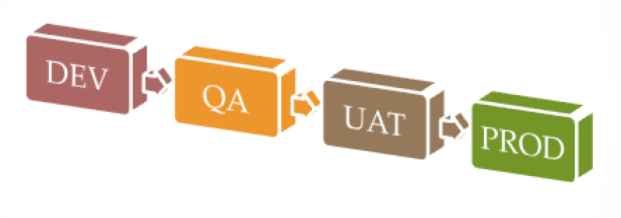Testing Foundation
What is Software Testing?
Objective of Testing
Why is testing necessary?
Common Terms used in Testing
Verification Vs Validations
QA Vs QC
Debugging Vs Testing
Seven Testing Principles
SDLC Vs STLC
Fundamentals of Test Process
Software quality Factors
Software Development Models
Waterfall Model
V models
Iterative Model
Test Levels
Component Testing
Integration Testing
System Testing
Acceptance Testing
Strategies for Integration Testing
Big Bang
Stubs and Driver
Top Down Testing
Bottom Up Testing
Test Types
Functional Testing
Non- Functional Testing
Structural Testing
Re-testing & Regression Testing
Static AND Dynamic Techniques
Static Technique
Dynamic Technique
Static Analysis by Tools
White Box Techniques
Statement Coverage Testing
Branch Coverage Testing
Decision Coverage Testing
Path Coverage
Black Box Techniques
Equivalence Partitioning
Boundary Value Analysis
Decision Table testing
State Transition testing
Experience Based TestingTechniques
Random Testing
Exploratory Testing
Error Guessing
Functional Testing
Integration Testing
Unit Testing
System Testing
Smoke testing
Sanity testing
Regression Testing
Usability Testing
Security Testing
User Acceptance Testing
White Box & Black Box Testing
Globalization & Localization Testing
Non Functional Testing
Compatibility testing
Endurance testing
Load testing
Performance testing
Recovery testing
Scalability testing
Stress testing
Volume testing
Test Planning and Estimation
Test Planning
Test Strategies Vs Test Plan
Test Approaches
Risk and Testing
Product Risks
Project Risks
Defect Management
Defect LifeCycle
Severity Vs Priority
User Acceptance Testing , Usability Testing
and Security Testing
This article will present you with a complete idea about User Acceptance Testing , Usability Testing and Security Testing
We will learn below topics in this article
User Acceptance Testing
- UAT is a process of verifying that a solution works for the user.
- User Acceptance Testing is the last phase of the software testing process.
- User Acceptance Testing is formal testing conducted to determine whether a system satisfies its acceptance criteria
- Actual users test the software to make sure it can handle required tasks in real- world scenarios, according to specifications.
- The objective of UAT is to assess if the system can support day-to-day business and user scenarios and ensure the system is sufficient and correct for business usage
- The primary objective of UAT is to demonstrate that you can run your business using the system – it is fit for purpose.

What makes a good UAT tester?
Background: Good all-round understanding of the business and experience in business operations.
Skills: A good communicator at all levels, written and oral. Good understanding of IT systems
Attitude: An analytical mind, able to think around issues to find a solution and not easily put off.
Types of UAT Testing
-
-
- Alpha & Beta Testing
- Contract Acceptance Testing
- Regulation Acceptance Testing
- Operational Acceptance Testing
-

Alpha & Beta Testing
Alpha Testing It is performed by the testers who are internal employees of the developer’s organisation.
Beta Testing, also known as “field testing”, takes place in the customer’s environment and involves some extensive testing by a group of customers who use the system in their environment.
Usability Testing
Usability is a measure of how easy it is to use something.
How easy will the use of the software be for a typical user to understand, learn, and operate
e.g., “user-friendliness”
ISO Definition (9241-11) for Usability:
“…the extent to which a product can be used by specified users to achieve specified goals with effectiveness, efficiency and satisfaction in a specified context of use.”
Usability testing is performed to evaluate a product by testing it on users.
Test users will try to complete typical tasks while observers watch, listen and takes notes.
The idea is to place users in front of of the software under test and watch how these users try to use it
Objective
- Identify any usability problems
- Collect quantitative data on participants’ performance
- Determine participant’s satisfaction with the product
Security Testing
- Security Testing is a process to determine that an information system protects data and maintains functionality.
- Validate whether there is any information leakage in the software
- Validate the potential loopholes and weaknesses of the system.
- Security Testing prevent unauthorised access to the resources and data
What it Covers?
- Confidentiality
- Integrity
- Authentication
- Authorization
- Availability
- Non-repudiation
Top Security Risks
- SQL Injections
- Cross Site Scripting
- Broken Authentication and Session Management
- Insecure Direct Object References
- Security Misconfiguration
- Insecure Cryptographic Storage
- Failure to Restrict URL Access
- Insufficient Transport Layer Protection
- Invalidated Redirects and Forwards
Recommended Articles:
Testing Foundation
What is Software Testing?
Objective of Testing
Why is testing necessary?
Common Terms used in Testing
Verification Vs Validations
QA Vs QC
Debugging Vs Testing
Seven Testing Principles
SDLC Vs STLC
Fundamentals of Test Process
Software quality Factors
Software Development Models
Waterfall Model
V models
Iterative Model
Test Levels
Component Testing
Integration Testing
System Testing
Acceptance Testing
Strategies for Integration Testing
Big Bang
Stubs and Driver
Top Down Testing
Bottom Up Testing
Test Types
Functional Testing
Non- Functional Testing
Structural Testing
Re-testing & Regression Testing
Static AND Dynamic Techniques
Static Technique
Dynamic Technique
Static Analysis by Tools
White Box Techniques
Statement Coverage Testing
Branch Coverage Testing
Decision Coverage Testing
Path Coverage
Black Box Techniques
Equivalence Partitioning
Boundary Value Analysis
Decision Table testing
State Transition testing
Experience Based TestingTechniques
Random Testing
Exploratory Testing
Error Guessing
Functional Testing
Integration Testing
Unit Testing
System Testing
Smoke testing
Sanity testing
Regression Testing
Usability Testing
Security Testing
User Acceptance Testing
White Box & Black Box Testing
Globalization & Localization Testing
Non Functional Testing
Compatibility testing
Endurance testing
Load testing
Performance testing
Recovery testing
Scalability testing
Stress testing
Volume testing
Test Planning and Estimation
Test Planning
Test Strategies Vs Test Plan
Test Approaches
Risk and Testing
Product Risks
Project Risks
Defect Management
Defect LifeCycle
Severity Vs Priority
